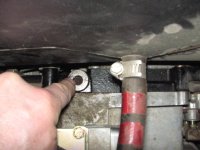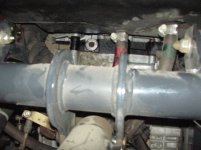Wayne_H
Gold Member
- Joined
- Dec 16, 2004
- Messages
- 383
- Location
- Davidsonville, Maryland
- Tractor
- John Deere 4400, '48 B and 318
OK, I bought the coast valve like many others and installed it in my RTV-900. No longer was I smashing my dogs nose on the hood of the RTV if I took my foot off the gas quickly.
Today, after hearing we could adjust the stock valve, I looked at my stock valve and decided to adjust it and re-install it. To do this, all you need to do is loosed the set scew which locks a flat head screw. That flat head screw adjusts the spring tension on the valve. I opened mine up two turns, cranked the set screw back down, and back in she went.
Now it still has breaking, but it is way smoother than before where it would send you flying if your foot came off the gas peddle. It apparently still has holding power, but just not the same agressive breaking it had before.
I guess I'll run it like this for a while and then see if I can sell my coast valve.
Does anyone know if adjusting the stock valve is a bad idea? Why isn't anyone talking about doing it on the forum? I can't see that it would do any harm.
Wayne
Today, after hearing we could adjust the stock valve, I looked at my stock valve and decided to adjust it and re-install it. To do this, all you need to do is loosed the set scew which locks a flat head screw. That flat head screw adjusts the spring tension on the valve. I opened mine up two turns, cranked the set screw back down, and back in she went.
Now it still has breaking, but it is way smoother than before where it would send you flying if your foot came off the gas peddle. It apparently still has holding power, but just not the same agressive breaking it had before.
I guess I'll run it like this for a while and then see if I can sell my coast valve.
Does anyone know if adjusting the stock valve is a bad idea? Why isn't anyone talking about doing it on the forum? I can't see that it would do any harm.
Wayne

